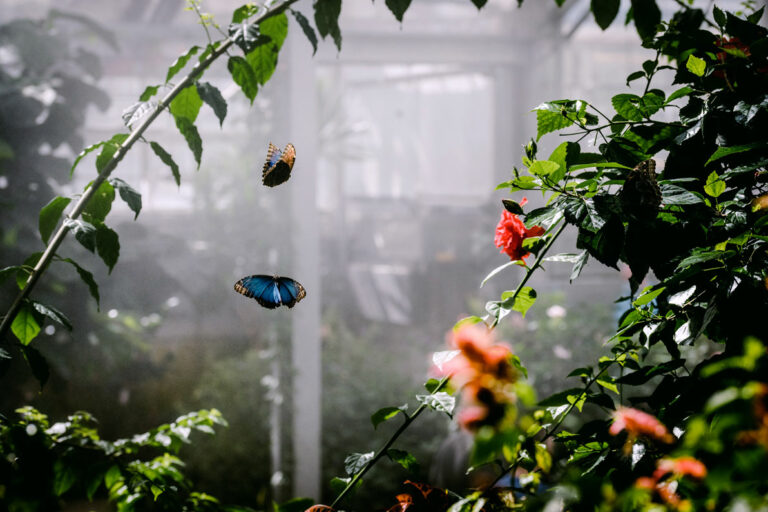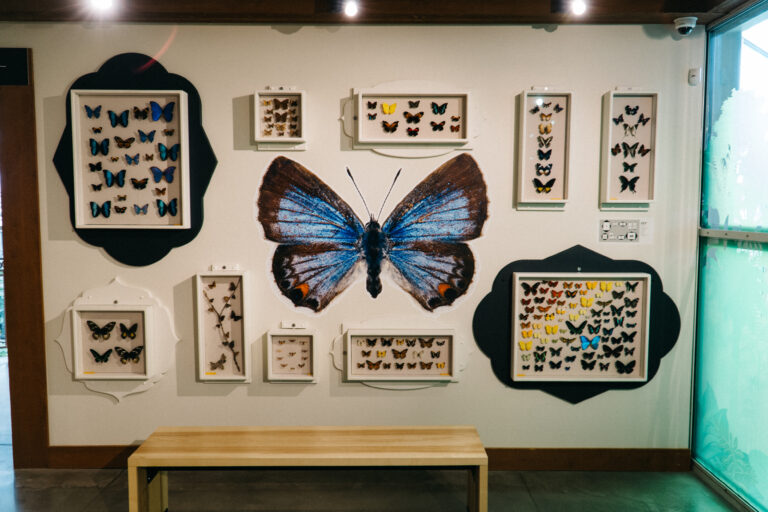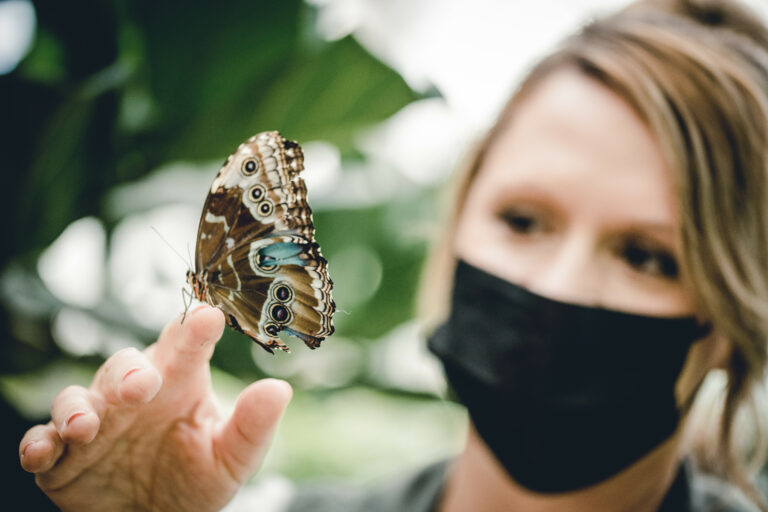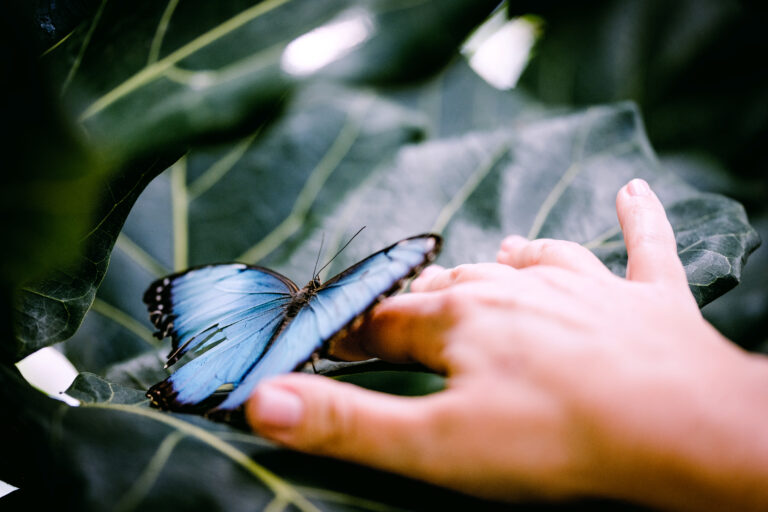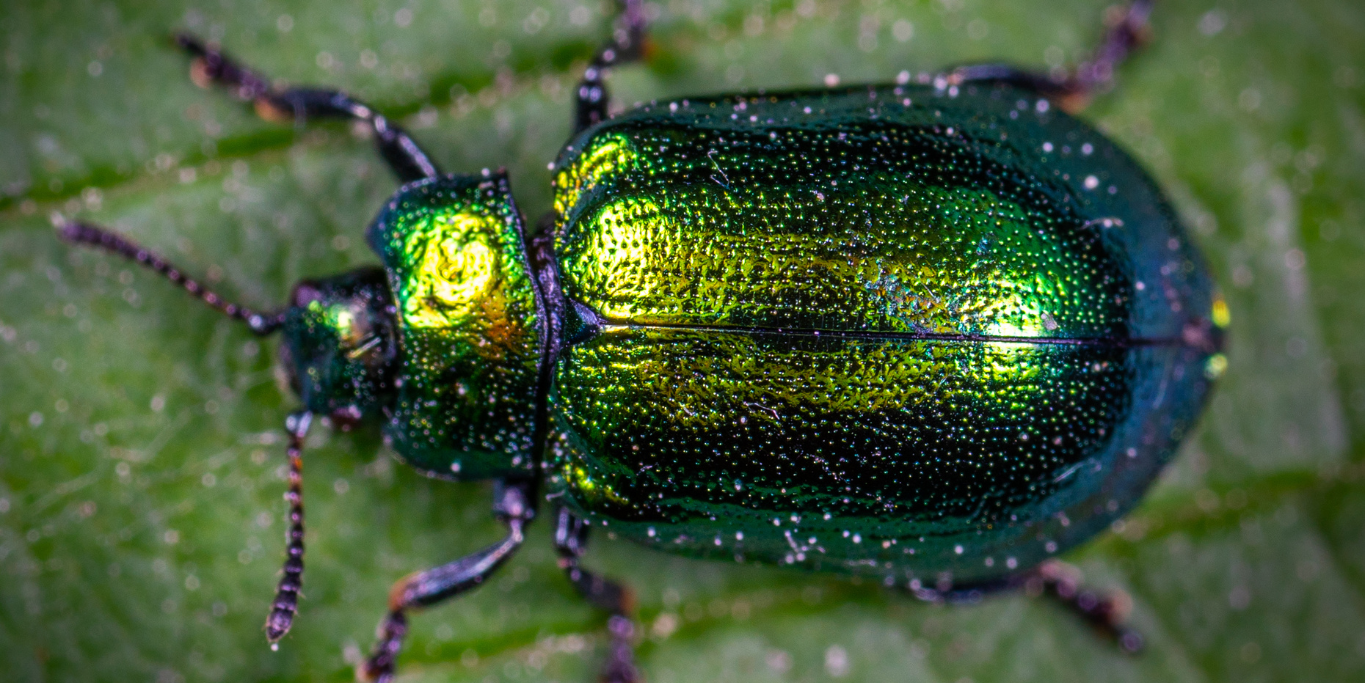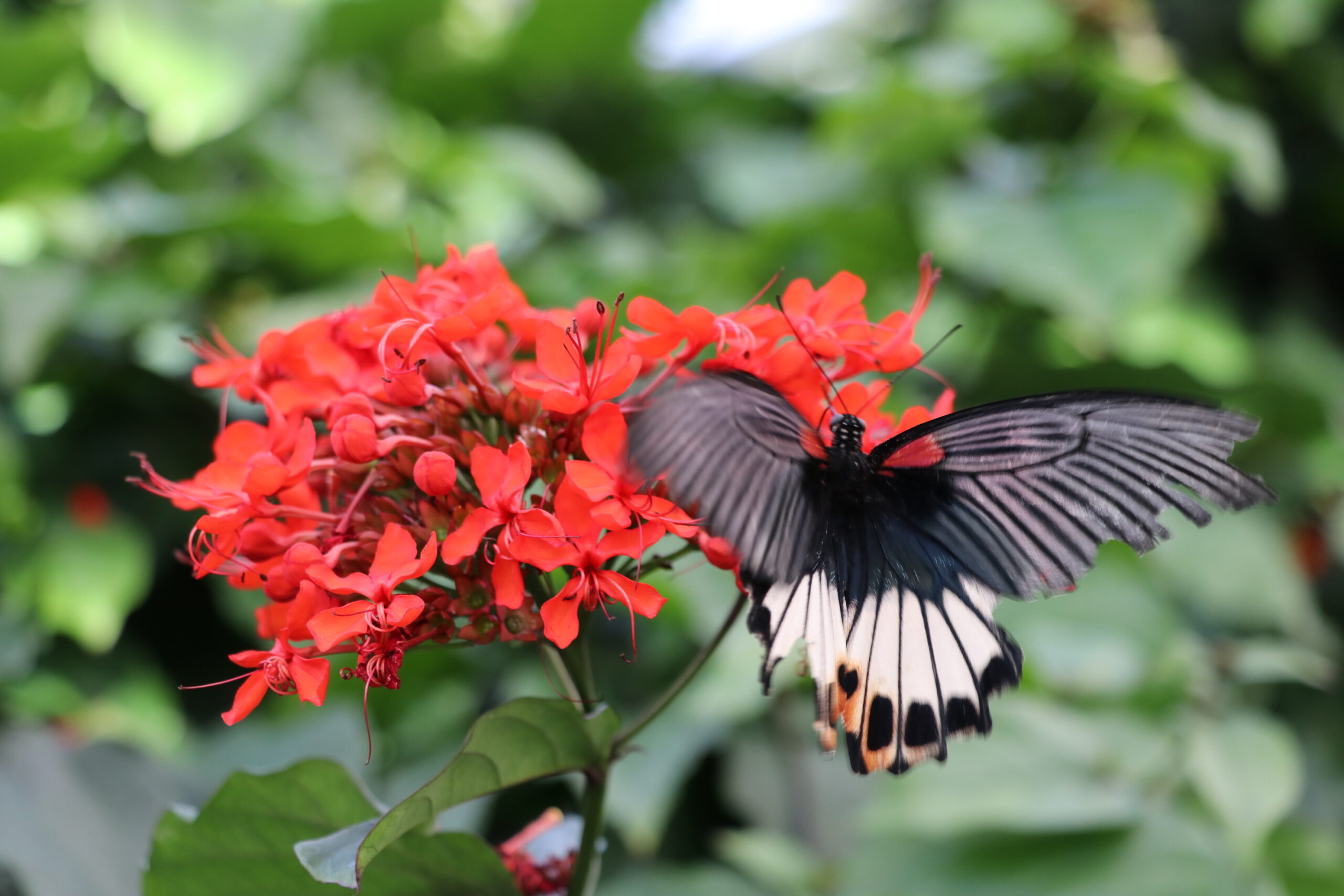When you walk into the conservatory at the Butterfly Biosphere, it is hard not to feel immediate awe upon all the fluttering colors against their deep green tree canvases.
It is often what butterflies are known for – their shape and their hues. Talk about true natural beauty.
But do you know how they get that color? Do you know what makes them shine in the light?
scaled wings
Butterflies and moths are named Lepidoptera, which means “scaly wings.” A butterfly’s body and wings are made of chitin, a fibrous substance that constructs most insect exoskeletons. It is similar to the keratin that helps form our nails and hair. Layered on top of this chitin are modified hairs. If you ever see dust on your fingers after holding a butterfly, that is those modified hairs. These hairs are called scales. The scales on a butterfly’s wing overlap like roof shingles. Scales increase wing mass and their heat-retaining capacity. Because they are filled with air, they insulate butterflies’ bodies. They generate thrust during flight, and they give butterflies their color patterns. Butterflies get their color from two different sources: pigmented and structural.
pigmented
Pigmented color comes from normal chemical pigments that absorb and/or reflect wavelengths of light. The same pigment that makes us tan in the summer, Melanin, gives butterflies their yellow, brown, and black coloring.
structural
Structural color is a little more complicated. This type of color comes from the specific structure of the wings, as does the iridescence. Chitin, the biopolymer that was mentioned earlier, is transparent. When light passes through transparent surfaces with many layers and reflects off these many surfaces, you will get different colors of varying intensities. These colors or the intensity of a hue will change depending on your angle.
A butterfly’s wings are their built-in wingman and help them make an impression on their mates. The vibrant colors also signal to predators that they taste bad. The darker hues help keep away predators by helping the butterfly camouflage with their surroundings. And, of course, they’re incredibly interesting to look at.
Who knew these small critters are full of so much complexity?
So next time you see a butterfly’s painted wings, think about how they are actually hundreds of scales absorbing and reflecting light to show you something full of grace and vibrancy. You can study butterfly wings in the Butterfly Biosphere conservatory, or for less flighty observation, we have pinned butterflies framed on the walls. Make sure to check in with an Explorer while you’re at the Biosphere to learn more about these awesome iridescent flyers!
